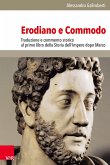The Hellenistic period marks a major turning-point in the development of Greek epigram: Before, epigrams were composed to be inscribed on an object (mainly on grave stones and votive offerings). While "stone epigrams" continue to be written, Hellenistic poets now start to compose "book epigrams" chiefly designed to be read on a scroll; many of these texts toy with the possibility of being inscribed on a monument and through this tension offer aesthetic pleasure to the reader. They frequently employ inscriptional language; at the same time, they modify it and often become a vehicle for poetological statements. The author investigates whether the generic modifications and expansions that may be observed in book epigrams are in turn reflected in metrical inscriptions of Hellenistic (and later) times, and how these were readapted to suit the needs of a real inscription.
Dieser Download kann aus rechtlichen Gründen nur mit Rechnungsadresse in A, B, BG, CY, CZ, D, DK, EW, E, FIN, F, GR, H, IRL, I, LT, L, LR, M, NL, PL, P, R, S, SLO, SK ausgeliefert werden.









